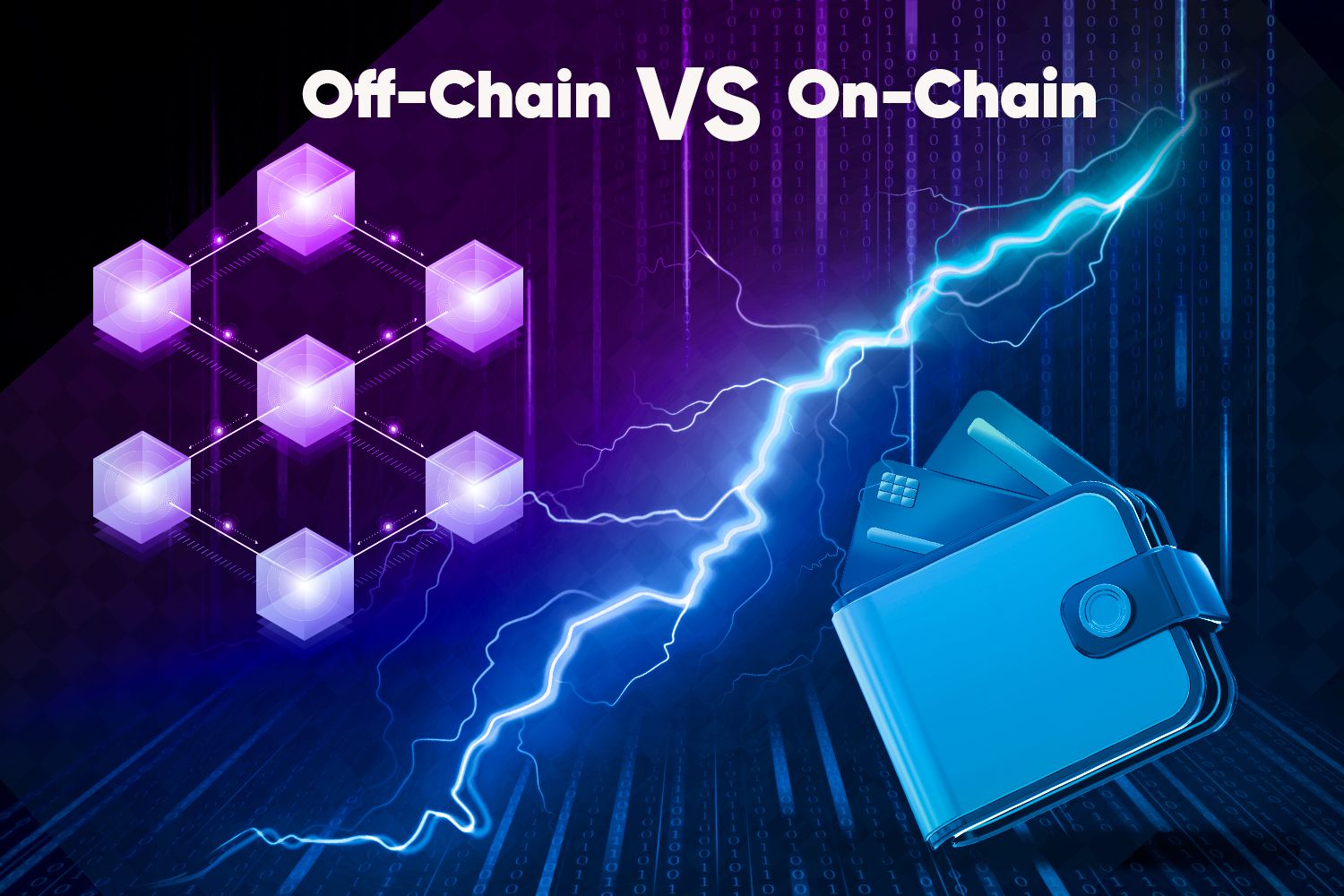What Is On-Chain Data? Real-World Blockchain Examples


In the world of blockchain technology, there’s a lot of talk about what happens “on-chain” versus “off-chain.” But if you’re wondering what on-chain data means in blockchain, you’re not alone. It’s one of those essential concepts that underpins the transparency, security, and decentralization that blockchains promise. Let’s break it down and explore why on-chain data is a game-changer, and where it’s already making an impact.
Definition and Significance of On-Chain Transactions
On-chain transactions refer to actions that are recorded directly on a blockchain network. These transactions are publicly visible, immutable, and verified by the network’s consensus mechanism. That means once a transaction is added to the blockchain, it can’t be altered or erased. This forms the backbone of trustless systems, where participants don’t need to rely on a central authority to confirm or secure data. The significance? On-chain actions allow users to interact with decentralized applications (dApps) and smart contracts, or send cryptocurrency while keeping a transparent and permanent record of every move.
How On-Chain Differs from Off-Chain in Blockchain Operations؟
It’s important to understand the difference between on-chain and off-chain activity. Off-chain transactions happen outside the main blockchain network, typically through side channels or centralized intermediaries. These can be faster and cheaper, but they sacrifice transparency and decentralization. On-chain activity, on the other hand, gets written directly onto the blockchain ledger, which becomes part of the public history of that network. To understand the fundamentals of blockchain technology and how it underpins these transactions, check out this comprehensive Blockchain Technology Guide. For instance, sending Bitcoin to someone on the main network is on-chain. Transferring Bitcoin through a centralized exchange without it hitting the blockchain? That’s off-chain.

How On-Chain Processes Ensure Transparency and Security؟
The Role of Public Ledgers in On-Chain Transactions
One of the core benefits of on-chain data is the use of public ledgers. These ledgers allow anyone to view transaction histories, wallet balances, and smart contract activity. That level of visibility enables a trustless environment, where no one needs to blindly trust another party because the data speaks for itself. Every on-chain action leaves a footprint. This transparency is especially powerful in financial systems, where traditional institutions often operate in black boxes.
How Cryptographic Mechanisms Safeguard On-Chain Data
While everything is visible, it’s also secure, thanks to cryptographic techniques. Blockchain networks use hashing algorithms, private/public key pairs, and digital signatures to ensure that on-chain data is both accurate and tamper-proof. Once a transaction is confirmed, it becomes part of a “block” that is cryptographically linked to the previous one, forming an unchangeable chain of data. That’s where the term blockchain comes from. Trying to alter one block would require changing every block after it, which is practically impossible on most networks.
Common Use Cases of On-Chain Technology
On-chain technology powers many of the most exciting innovations in blockchain today. Because it provides verifiable and permanent records, it’s being used across industries:
Financial Transactions and Payments
Cryptocurrencies like Bitcoin and Ethereum depend on on-chain transactions to process secure, peer-to-peer transfers. Every transaction is verified by the network and added to the blockchain, ensuring no double-spending and full transparency. On-chain data is also the foundation of decentralized finance (DeFi) platforms that offer loans, trading, and interest, all without a bank. For a deeper dive into how DeFi works and its applications in crypto trading, check out this DeFi Crypto Trading Guide.
Smart Contracts
A major use case is smart contracts, programs stored and executed directly on the blockchain. They automatically enforce agreements (like escrow, payments, or legal contracts) when conditions are met. For example, Uniswap uses smart contracts to allow users to trade crypto assets without a centralized exchange.
Supply Chain and Logistics
Major companies like Walmart and IBM are using on-chain records to track goods throughout the supply chain. With every stage recorded on the blockchain, businesses can prove product authenticity and reduce fraud. Imagine scanning a QR code on food packaging and seeing the entire farm-to-shelf journey; on-chain data makes that possible.
Decentralized Identity and Credentials
Projects like Civic or BrightID use on-chain data to build secure, verifiable identities. Instead of handing over personal documents to third parties, individuals can prove who they are using data stored on the blockchain. Universities and organizations are also experimenting with issuing on-chain certificates and degrees that are impossible to fake.
Governance and Voting
In blockchain-based communities like DAOs (Decentralized Autonomous Organizations), voting happens entirely on-chain. Every proposal, vote, and result is recorded on the blockchain, providing full transparency and eliminating tampering. Tools like Snapshot and Aragon are empowering decentralized decision-making in real-time.
Real Estate and Asset Tokenization
Platforms like RealT are using blockchain to let people invest in tokenized real estate. Each property is divided into digital tokens, and ownership is stored on-chain. This improves liquidity and makes investing in property more accessible to everyone, not just large investors.
Gaming and NFTs
Blockchain games like Axie Infinity and marketplaces like OpenSea use on-chain data to verify ownership of digital items and collectables. Whether it’s a rare sword in a game or a digital art NFT, its history and authenticity are recorded permanently on-chain.
Challenges and Limitations of On-Chain Technology
Despite its power, on-chain technology faces some real challenges:
These issues are pushing innovation in scalability solutions, like Layer 2 rollups and proof-of-stake systems.
Conclusion
So, what does on-chain data mean in blockchain technology? It means transparency, trust, and tamper-proof records, all without a middleman. From cryptocurrencies to identity verification, on-chain technology is transforming how we store and interact with digital information. While there are still hurdles to overcome, on-chain data is the foundation of a decentralized future, where every action is traceable, secure, and fair. As blockchain adoption continues, understanding and leveraging on-chain data will only become more important.
Frequently asked questions
Check out most commonly asked questions, addressed based on community needs. Can't find what you are looking for?
Contact us, our friendly support helps!
What is on-chain data in blockchain?
On-chain data refers to any information or transaction that is permanently recorded on a blockchain network. It includes wallet balances, smart contract interactions, and transaction histories that are publicly visible and immutable.
How is on-chain data different from off-chain data?
On-chain data is stored directly on the blockchain and validated by a decentralized network, making it transparent and tamper-proof. Off-chain data occurs outside the blockchain, often through centralized platforms, offering lower costs but less transparency.
What are some common use cases of on-chain data?
On-chain data powers real-world blockchain applications like decentralized finance (DeFi), smart contracts, NFT ownership, supply chain tracking, decentralized identity, and blockchain-based voting. These use cases rely on trustless, verifiable records.
How does on-chain data enhance transparency and trust?
All on-chain activity is recorded on a public ledger that anyone can inspect. This ensures accountability, eliminates the need for intermediaries, and creates a system where trust is built through verifiable data rather than third parties.




